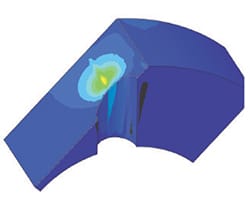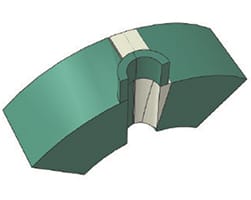Pressure Part Integrity


Running utility boilers for unusual cyclic conditions places new demands on boiler operators, requiring new and pro-active measures to manage the risk of equipment failure. These summary notes illustrate some aspects of the problem for boiler pressure parts.
Boiler Design Code Not Relevant For Cyclic Loading
Conventional and HRSG Power boilers are designed to Section I of the ASME Boiler and Pressure Vessel Code. This code Section does not de al with cyclic loading and therefore the possibility of fatigue and creep/fatigue failures can be high, particularly in regions of high heat flux, internal fouling, wastage, stress concentrations etc. The role of water chemistry is critical. Water chemistry is sensitive to cyclic loading and requires special measures.
Increased Operational Requirements
It is not uncommon for units originally intended for base load operation to be operating now in cycling and even two-shifting mode. This can mean that the original intended cyclic life is used up many times over. This may or may not mean that failures are inevitable. Some effects of cycling are identified and possible ways to characterize and manage the risk.
Need to Optimize Effectiveness of Inspection
The absence of design calculations for cyclic loading means that high risk components and locations have to be identified based on stress analysis, plant history and experience in similar plants. This is essential for effective planning of inspection since 100% inspection of pressure parts is not feasible.
Monitoring, Inspection, Testing and Assessment
The objective of component risk management is to avoiding failures along with unnecessary repairs and replacements.
Considering the range of components, problems of access, and the differing failure modes, the methods used will vary from component to component. For example superheater and reheater tubes, wastage and oxide thickness are a critical parameters requiring measurement; metal temperature can be estimated from performance calculations, oxide thickness and terminal tube temperature. For headers and piping, direct temperature monitoring is necessary. A typical range of inspection techniques includes borescopic inspection, replicas and UT of welds and tube ligaments.
Rational and Defensible Decision Making
The ability to compare risks of failure means that decisions for inspection, repair, down rating, etc. have a solid basis. This is important when attempting to understand the meaning of “exceeding minimum rupture life”. A probabilistic definition of acceptable risk may be used to define inspection intervals which decrease over time, and which can be justified in terms of the risk of failure between inspections.
For each critical component or assembly, the estimate of risk needs to be updated when new data becomes available. This ensures that any unforeseen event such as an over-temperature can be assessed quickly and efficiently.
At Stress Engineering Services, we specialize in the identification of critical components, their failure modes and corresponding data. Let us help you change the risks of cyclic failures from unknown to manageable.



